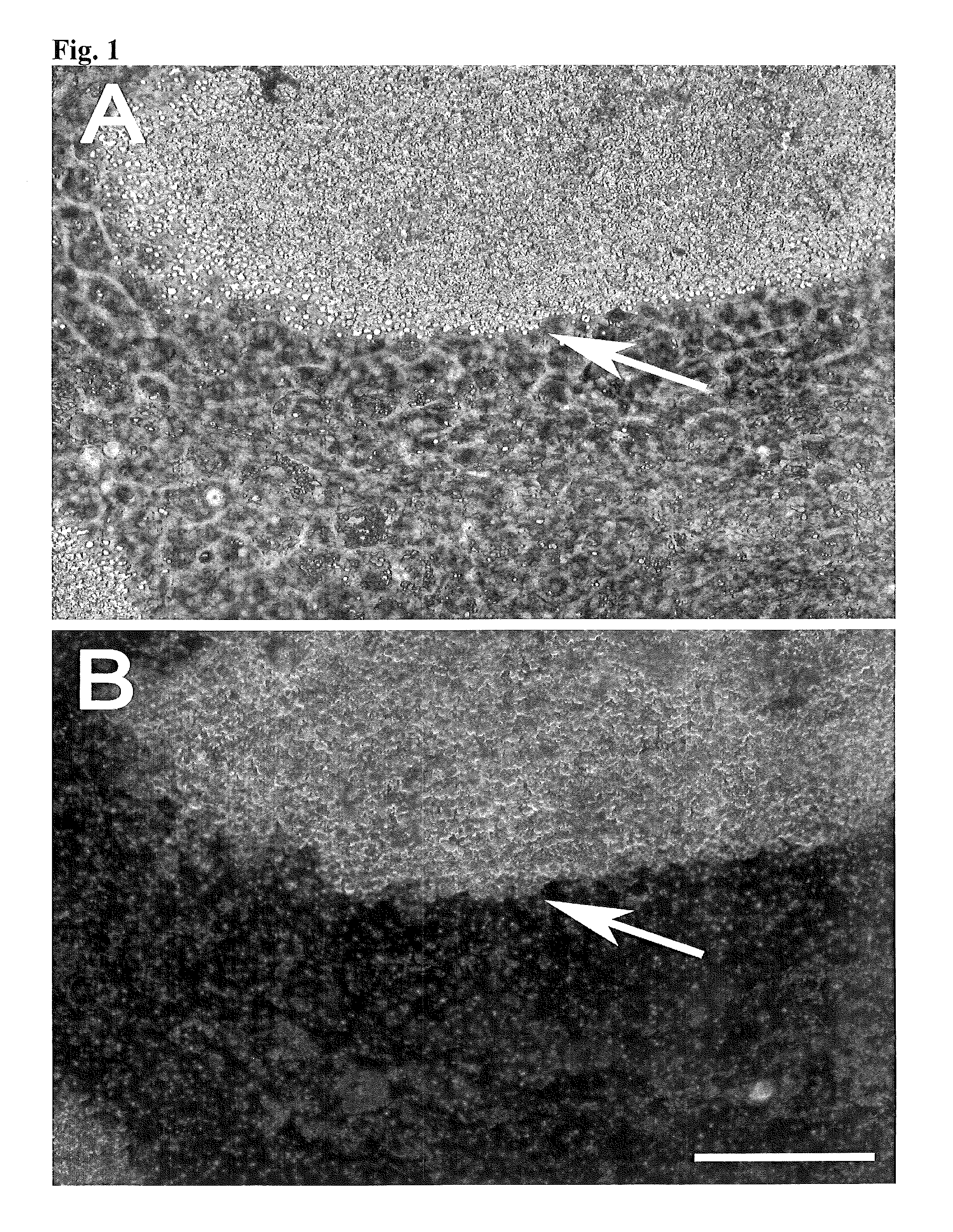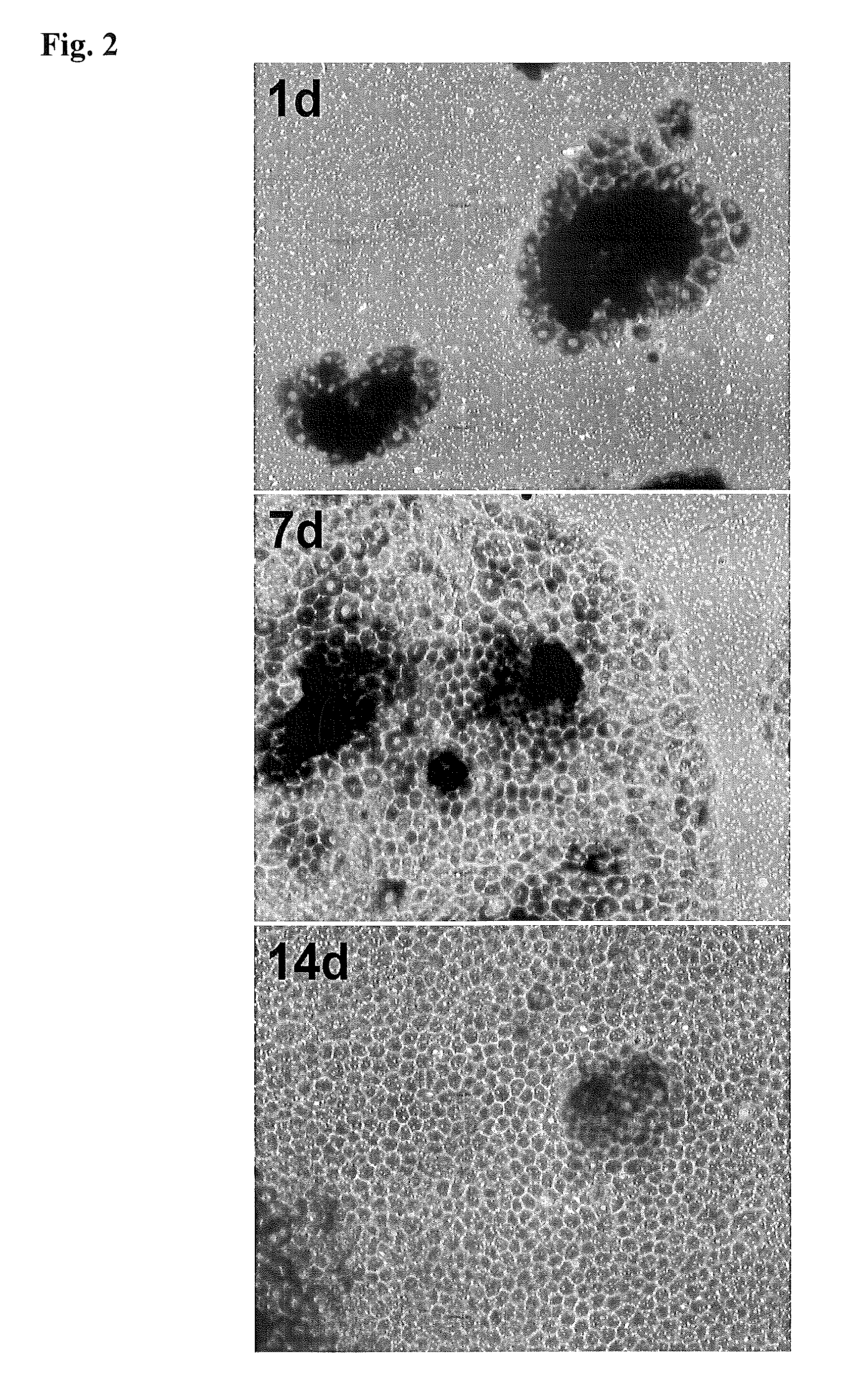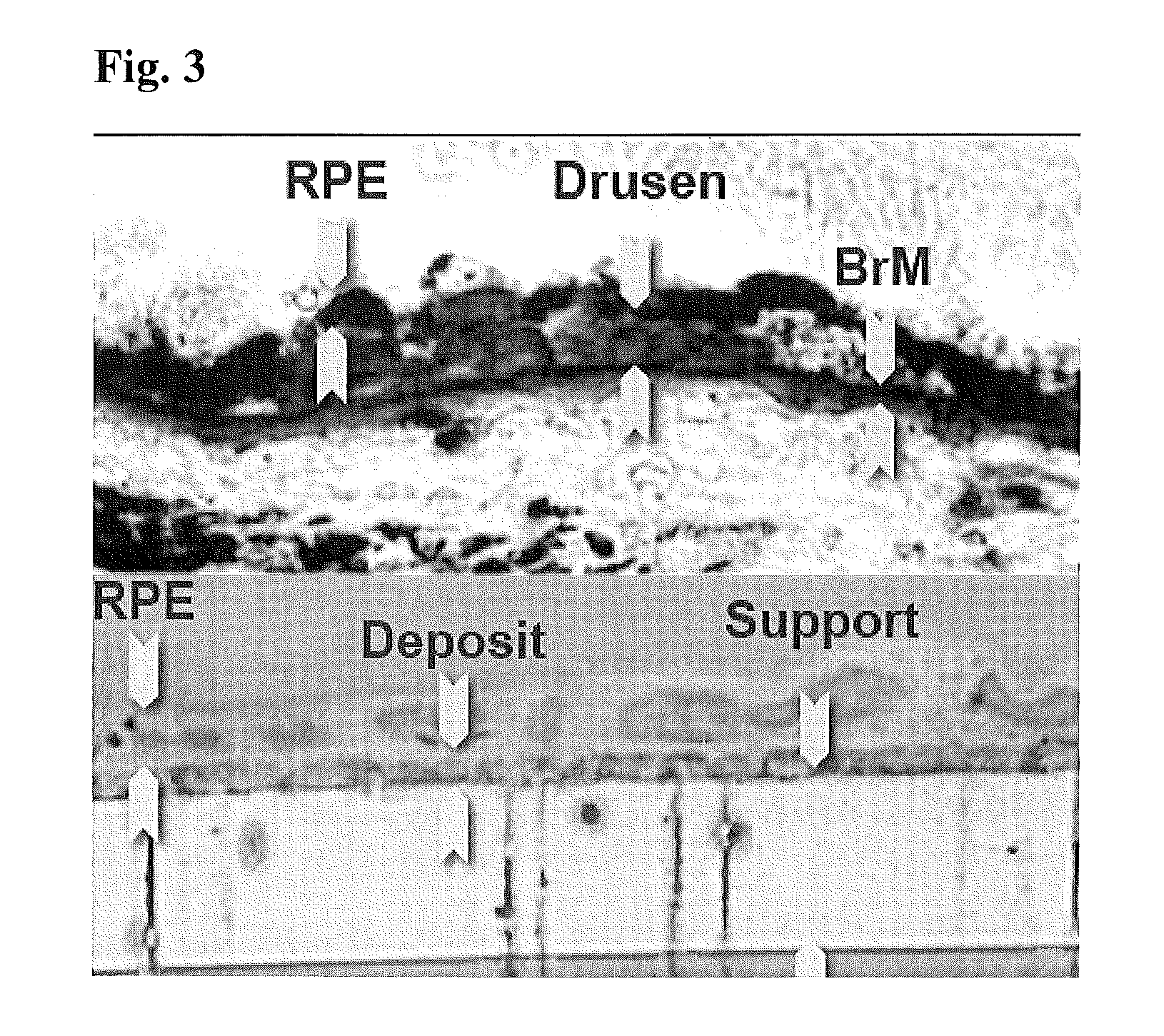Retinal pigment epithelial primary cell culture system producing subcellular deposits
a cell culture system and pigment technology, applied in the field of retinal pigment epithelial primary cell culture system, can solve the problems of inability to understand the pathogenic mechanisms involved in macular degeneration and testing new treatments, and inability to accurately model the cell culture system, so as to achieve the epithelial phenotype. , the effect of maintaining the epithelial phenotyp
- Summary
- Abstract
- Description
- Claims
- Application Information
AI Technical Summary
Benefits of technology
Problems solved by technology
Method used
Image
Examples
example 1
Establishment of a RPE Primary Cell Culture System
[0061]The methods used to procure animal tissues are approved by the Institutional Review Board at the University of Alabama at Birmingham. RPE cells are dissociated from porcine eyecups, purified and maintained in culture as previously described (citation IOVS 48:1892). Briefly, eyes enucleated from anesthetized animals are transported to the laboratory in sterile ice-cold normal saline. After removal of the anterior segment of the eye and the vitreous, the posterior eyecup is incubated in Leibovitz (L-15) medium; Invitrogen Corp., Carlsbad, Calif.) at room temperature for 30 minutes and the retina detached with forceps and scissors to expose the RPE monolayer. RPE cells are harvested by serial 30-minute incubations at 37° C. in 0.25% trypsin (Sigma-Aldrich, St. Louis, Mo.) in L-15 and collected by repeated gentle trituration with a 1-mL sterile pipette. To facilitate dissociation, trypsin-released RPE cells are incubated with 1% DN...
example 2
Assaying Agents for Modulation of the Production of Subcellular Deposits by the RPE Primary Cell Culture System
[0063]A RPE primary cell culture system produced as described in Example 1 is contacted with a varying concentration of a candidate agent. The cell culture system is maintained in the presence of the candidate agent for varying periods of time and periodically assayed for changes in the production of subcellular deposits as compared to a control RPE primary cell culture system produced as described in Example 1 but not contacted with the candidate agent. The subcellular deposits produced by the RPE primary cell culture systems are quantified using, for example, dark field photomicrography. Changes that are observed in the RPE primary cell culture system that is contacted with the agent include decreased production of the subcellular deposits by; increased production of the subcellular deposits; prevention of the accumulation of the subcellular deposits; and / or prevention of...
PUM
| Property | Measurement | Unit |
|---|---|---|
| size | aaaaa | aaaaa |
| time | aaaaa | aaaaa |
| time | aaaaa | aaaaa |
Abstract
Description
Claims
Application Information
 Login to View More
Login to View More - R&D
- Intellectual Property
- Life Sciences
- Materials
- Tech Scout
- Unparalleled Data Quality
- Higher Quality Content
- 60% Fewer Hallucinations
Browse by: Latest US Patents, China's latest patents, Technical Efficacy Thesaurus, Application Domain, Technology Topic, Popular Technical Reports.
© 2025 PatSnap. All rights reserved.Legal|Privacy policy|Modern Slavery Act Transparency Statement|Sitemap|About US| Contact US: help@patsnap.com



